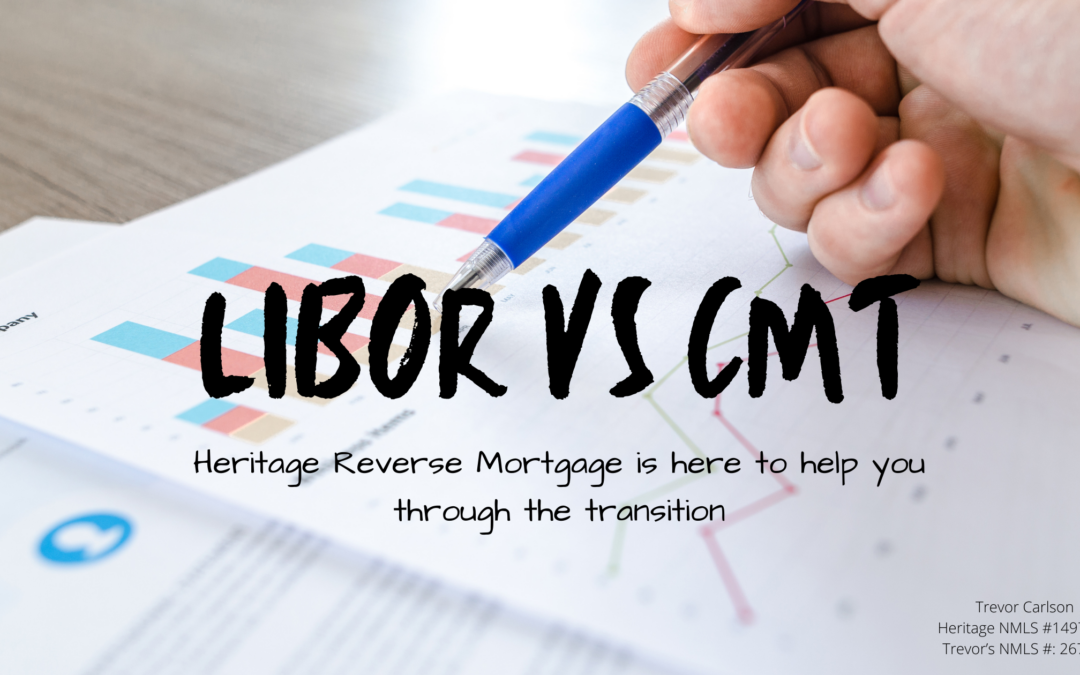If you have a Reverse Mortgage or are thinking of getting one then a HECM Reverse Change is
something you keep an eye on.
Every year around the end of September and again in December FHA/HUD likes to surprise the HECM
Reverse Mortgage industry with changes. Sometimes the HECM reverse changes are small and
sometimes they are pretty dramatic. The year 2020 was one of those more dramatic years.
For over a decade adjustable-rate Reverse Mortgages have been linked to Libor (London Inter-Bank
Offered Rate) this is an index that had been used by major global banks as they lend money to each other.
A few years ago it was discovered that there has been regular manipulation of this rate making it
unreliable. So as a result, FHA/HUD decided to move away from it toward the end of 2021.
The big HECM Reverse Change this year was that HUD decided to fast-track the change by a year. As
of December 31, 2020, HUD will no longer endorse mortgages linked to LIBOR. This surprise created a frenzy for a few weeks as banks and lenders worked to switch to a temporary solution called the CMT (Constant Maturity Rate). The CMT is determined by the U.S. Treasury and the Federal Reserve.
(Update Jan 22, 2021: Because of the abrupt nature of FHA’s change this year Banks were able to convince HUD to extend the implementation of the CMT thus allowing for more LIBOR-based Reverse Mortgages to continue to close up until January 29, 2021.)
What are the Pros and Cons of these changes?
Pros –
 – The CMT in general is a lower rate and a little more consistent than the LIBOR.
 – The CMT tends to follow the US economy and Fed Funds rate more closely.
Cons –
– Initially, the CMT only offered a rate that adjusted monthly, had no annual caps, and a 10%
lifetime Cap.
– The Libor offered a rate that adjusted only once a year, had 2% annual caps and 5% lifetime
caps.
– Fortunately, banks have since released updated versions of the CMT which also adjust only once
a year and have the 2% and 5% Caps.
(Update Jan 22, 2021: most banks offer monthly adjustable rates with a maximum of 10% lifetime caps and one that has 5% lifetime caps. They also offer an annual adjustable-rate with 2% annual Caps and 5% lifetime Caps. The difference between all three is that the higher risk options like the 10% cap usually have the lower interest rate. The Annual adjusting rate has the highest starting interest rate.)
In the Short-run this was a big surprise to the industry that had to grapple with the surprise. In the long
run, we’re adjusting pretty quickly and this reverse mortgage change will end up being a great
improvement to Reverse Mortgages and the future of the industry.
Additional information:
Going along with this article is a video on Youtube that illustrates the differences between the Traditional Fixed Rate Reverse Mortgage and the Growth Line of Credit Reverse Mortgage. You can also watch the full version of this informational video on Youtube or our Website.
When you or someone you care about is ready to talk about your Reverse Mortgage options. give us a call. We’re happy to work up your scenarios and show you how we can make your life better with this amazing product.
Trevor Carlson
President – Reverse Mortgage Specialist
Heritage Reverse Mortgage
435-359-9000
www.heritagereversemortgage.com
Heritage NMLS #1497455 Trevor?s NMLS #: 267962
1060 South Main Street Bldg. A Suite 101B
St George Utah 84770

